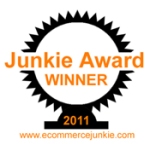The rise of e-commerce on Facebook and other such social networking resources has been a well-documented trend in the industry for the better part of a year or so. We’ve seen a steady flow of new companies and applications emerging, offering e-commerce solutions on Facebook in a variety of ways and those new entrants to the market have garnered their own fair share of coverage as well.
What’s often been missing, however, is a quantitative analysis of how those Facebook e-commerce solutions are performing for retailers. Admittedly, tracking sales on Facebook in particular seems to be tough to do, which makes it harder to get a handle on exactly how retailers are doing on Facebook.
But shopping search engine SortPrice.com today released some data on how its Store Application for Facebook performed in 2010 that helps illustrate just how big F-commerce, as SortPrice calls it, has become. And based on their information, the trend is living up to the hype and then some.
SortPrice has been doing the F-commerce thing longer than just about anyone else and they boast more retail partners (more than 1,400) than any other competing Facebook e-commerce solutions provider. So we’re inclined to put a lot of stock in the company’s information.
According to the data, about 7.6 million products were posted on SortPrice-built Facebook stores in 2010, a 60 percent increase from the year before. In total, there was nearly $3.8 billion in merchandise on those Facebook stores as well, a startling number to say the least.
But there’s one nugget really stood out to us—that 40 percent of the 1,400-plus retailers using SortPrice’s app started using it at some point last year, exemplifying just how much of a priority F-commerce became in 2010.
“Last year, retailers across the board definitely began to realize the importance of hopping on the social shopping bandwagon,” says Asaf Klibansky, SortPrice’s co-founder and CTO.
There appears to be a lot of diversity in the products SortPrice is listing on its’ Facebook stores as well. By the end of 2010, there were approximately 53,000 different product categories represented in the listings. Here are the top 5 categories both by product count and value in dollars, according to SortPrice:
Top Product Industry Categories (by total products)
1.Apparel (62,106)
2.Women’s Jewelry (37,429)
3.Home & Garden (33,754)
4.Gifts & Flowers (11, 618)
5.Computers (11, 580)
Top Product Industry Categories (in dollars)
1.Home & Garden ($7.966 million)
2.Computers ($5.84 million)
3.Electronics ($3.983 million)
4.Jewelry & Watches ($3.023 million)
5.Apparel ($2.846 million)
It will be interesting to see if SortPrice runs similar data this time next year to gauge just how much F-commerce grew this year. But it’s safe to say that while F-commerce wasn’t born 2010, it certainly enjoyed a coming-out party last year.
Leave us your thoughts and comments.




